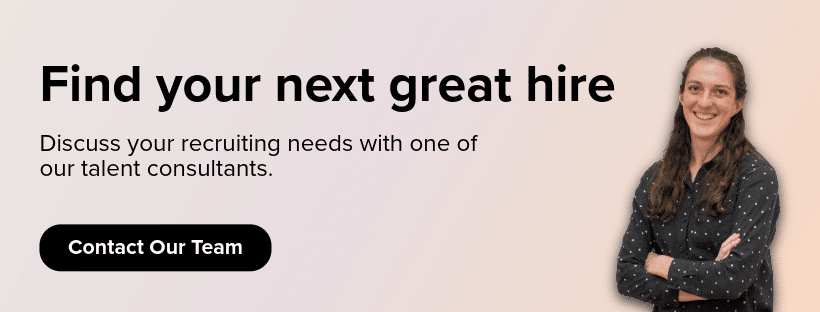
Interview bias hides in plain sight. A single snap judgment or unchecked assumption can send your entire hiring process off course, shrinking your talent pool and hurting your reputation, often without you realizing it.
In this guide, I’ll show you what bias looks like in interviews, how it quietly damages results, where it hides (even in “fair” systems), and exactly how to spot and fix issues before top candidates pass you by.
Explore the Guide:
- Understanding Interview Bias
- How Bias Shows Up in Interviews
- Why Bias Harms Your Hiring Process
- Tech & Interview Structure: Hidden Bias Risks
- How To Spot and Measure Bias in Interviews
- Proven Ways to Reduce Interview Bias
- What Happens If You Ignore Bias
Understanding Interview Bias
Interview bias means letting personal, unconscious, or systemic preferences shape how you evaluate candidates—not their actual skills, experience, or fit. Bias can be obvious (favoring someone from your alma mater) or subtle (leaning into a “gut feeling” that’s not backed by the candidate’s work).
Why does this matter? Any hint of bias—intentional or not—means you’re kneecapping your process. It shrinks your talent pool, undermines team diversity, and can cause you to miss out on top performers.
How Bias Shows Up in Interviews
Bias isn’t always ugly or deliberate. Most of it is unconsciously hardwired from habits, personalities, or even the way we structure interviews.
Here are a few types you’ll see again and again:
| Bias Type | What It Is | How it Can Be Seen in an Interview |
| First Impression Bias | Judging someone as ‘right’ or ‘wrong’ based on initial perceptions. | Forming opinions about a candidate based on their appearance, tone of voice, handshake, confidence level, or small talk rather than their qualifications and responses. |
| Halo/Horns Effect | One strong trait (good or bad) overshadows everything else and influences how we perceive them. | A great resume makes you overlook weak technical answers, or one bad answer makes you dismiss their solid 10 years of experience. |
| Affinity Bias | Favoring candidates who share your hobby, background, or personality style. | You click with someone because they went to your college or are fans of your favorite sports team, so you rate them higher than their actual answers warrant. |
| Confirmation Bias | Looking for evidence that supports your gut feeling, ignoring facts that don’t match. | You ‘gutfeel’ someone won’t fit, then listen selectively to their answers-hearing what confirms your bias, not what they said. |
| Negative Emphasis | Disqualifying someone based on a single flaw while ignoring strengths. | One mistake or gap in experience causes you to mentally eliminate them, even though they excel in other critical areas. |
Bias can creep in through the questions you ask, who’s on the interview panel, what’s discussed before and after, or even the job description itself.
Why Bias Harms Your Hiring Process
The damage is bigger than just a bad hire. Bias filters out diverse perspectives, reduces team innovation, and leads to poor retention. According to recent surveys, nearly 70% of hiring decisions are made in the first five minutes of interviews—often for reasons that have little to do with qualifications.
Bias also limits your candidate pool. Research shows that accent, gender, and affinity bias all make it harder for qualified people to break through, even when they’re objectively a better fit. In today’s market, that puts your brand and pipeline at risk.
The real cost? Wasted time, recurring vacancies, repeated onboarding—and a reputation that makes great candidates steer clear.
Tech & Interview Structure: Hidden Bias Risks
Modern ATS or AI solutions can feel objective, but algorithms are only as fair as the data and processes built into them. Structured interview guides and panels can help, but they won’t fix bias if your rubrics, questions, or data still reflect old habits.
Hidden tech risks include:
- AI trained on biased historical data (e.g., hiring mostly men for engineering).
- Rubrics that weigh vague “fit” over real skills.
- Interviews that use different questions for similar candidates.
- Scorecards that let gut instinct override structured answers.
Even “blind” skills assessments have bias risks—when instructions, feedback, or benchmarks aren’t equally clear or fair.
How To Spot and Measure Bias in Interviews
Bias is sneaky; it doesn’t announce itself. Here’s what works:
- Compare interview questions: Are all candidates asked the same things? Are any questions irrelevant or leading?
- Audit interview notes: Patterns can reveal where feedback leans towards personal preference.
- Check scorecards over time: Are certain traits favored consistently (e.g., outgoing personality, degree from a certain school)?
- Look at drop-off points: Are certain demographics slipping away after panel interviews or technical screens?
Regular process audits, data reviews, and candid team debriefs make bias visible.
Proven Ways to Reduce Interview Bias
It takes more than awareness. Start here:
- Use structured interviews, ask every candidate the same questions, and tie answers to a scoring rubric.
- Build diverse panels—different backgrounds help flag blind spots.
- Anonymous test assignments and work samples.
- Standardized evaluation guides, with clear definitions for each skill or trait.
- Interviewer bias training and regular feedback loops.
When we guide clients to put these recommendations into practice, the impact on their hiring outcomes and team diversity is clear.
What Happens If You Ignore Bias
It’s easy to push concerns about bias down the priority list, but the negative effects add up fast. When bias seeps into your process, you’ll see more failed hires and second-guessing, less team innovation and engagement, and higher turnover as people who “fit” a mold may not stay or succeed.
Your employer brand can also take a lasting hit, because candidates talk and review sites and amplify disappointing experiences. Bias doesn’t go away on its own—if your process isn’t equipped to catch and address it, you’re risking long-term damage and missing opportunities for your organization to grow and thrive
Next Steps for a Fairer, Smarter Hiring Process
You may not suspect bias in your interview process, but it happens to the best of us. A simple audit can reveal more than you expect. Start by pulling your recent interview questions and scorecards, then look for patterns, and invite honest team feedback. If you spot inconsistencies or subtle preferences, it’s time to act.
When you work with us, we help you streamline your process and keep interviews fair and consistent. We’ll recommend questions, share best practices, and support your team in making every step as objective as possible. That way, every candidate gets a fair opportunity, and your hiring decisions are easier.





